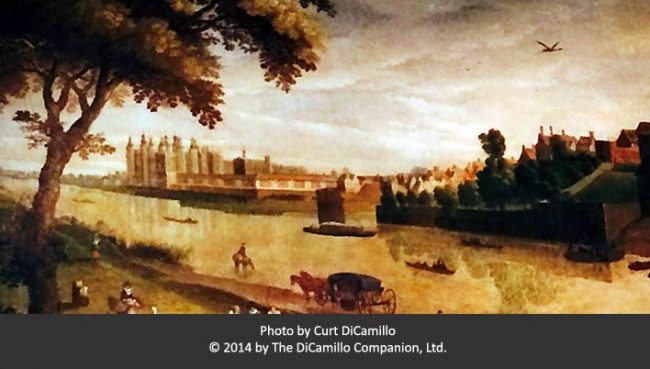
Detail of the Palace from a circa 17th century paitning (probably Flemish) today in the collection of the Fitzwilliam Museum, Cambridge.
Earlier Houses: The 16th century palace of Henry VII replaced another palace, which was itself built on the site of a manor house.
Built / Designed For: King Henry VII
House & Family History: Richmond Palace was built in the opening years of the 16th century by King Henry VII, whose title before he became king was earl of Richmond. The village in which it was built, then called Sheen, was renamed Richmond in honor of the king and his palace. Richmond Palace (on the opposite bank from the Palace of Westminster) was Queen Elizabeth I's favorite home; she died here in 1603; the Palace remained a royal residence until the execution of Charles I in 1649. Immediately after the death of the king and the establishment of the commonwealth, the Palace was surveyed by order of Parliament and was sold for £13,000 (approximately £29 million in 2016 inflation-adjusted values using the labour value commodity index). Over the next 10 years Richmond Palace was largely demolished, with its stone and wood reused as building material for other structures. Today there are only vestigial traces that remain, such as the Gatehouse and some of the grounds. The site of the former Palace is the area between Richmond Green and the River Thames.
House Listed: Demolished
Park Listed: Not Listed
Past Seat / Home of: King Henry VII, early 16th century; King Henry VIII, 16th century. Anne of Cleves, 16th century. Queen Elizabeth I, 16th and early 17th centuries. King James I, early 17th century. King Charles I, 17th century.
Current Ownership Type: Demolished
Primary Current Ownership Use: Demolished
House Open to Public: No
Historic Houses Member: No